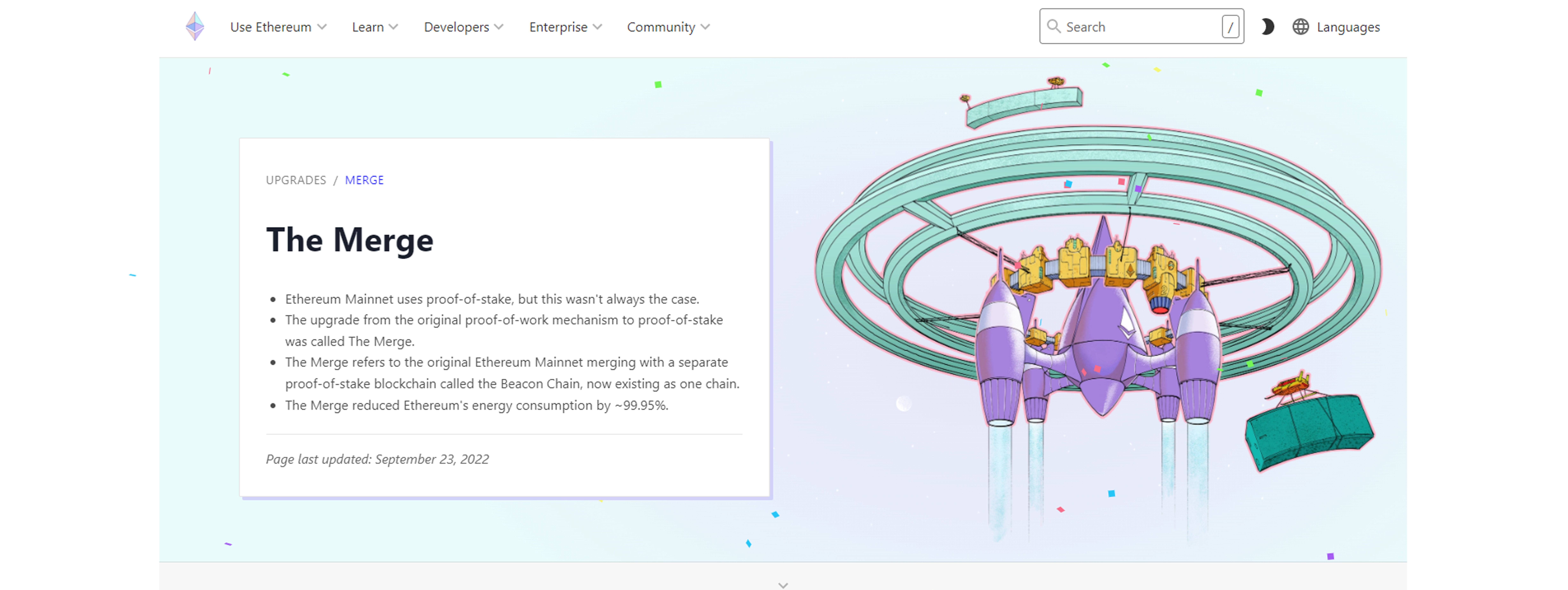The Only Ethereum Post-Merge Update You Need to Know
Ethereum transitioned from a proof-of-work (POW) model to a proof-of-stake (POS) model – better known as "The Merge." The price of ETH has dropped over 25% since September 15, but what is more important in the long run is that the network's issuance rate also plunged following the POS switch.
Ethereum Merge Update
The switch from POW to POS means that the miners have been replaced by validators that have staked ETH.
This big change in the tokenomics of ETH triggered a nearly 95% drop in the ETH issuance rate. Essentially, the reduction in Ether's supply made Ethereum much more deflationary.
Based on live statistics from ultrasound.modey, 10,894 ETH has been issued since the Merge (as of October 3, 2022).

By comparison, if the proof-of-work (POW) model was still running, the miners would have produced 223,738 ETH since September 15.
This shows that there has been a notable decrease in Ether's supply, proving the theory that The Merge has a big deflationary effect.
The post-Merge stats also show that by taking into account both the upgrade EIP-1559 and the Merge, 603,000 new Ether per year will be produced compared to 4,931,000 new Ether with the old POW model.
As of today, Ethereum's supply is at a current level of 122,629,383 ether, having a total tradable value of $158.00 billion.
As ETH becomes scarcer over time, this supply shock, combined with future increased demand for the cryptocurrency, will support an increase in the ETH price over the long term.
Other Articles on the Ethereum Merge.
The Merge: What It Means To Ethereum
The Ethereum Merge, which has been delayed for several years, is scheduled to take place in just a few days September 15-16. The Merge, also touted as Ethereum 2.0 or ETH 2.0, will most likely take place September 15-16. The widely-anticipated Merge is an upgrade from the current proof-of-work consensus to a more energy-efficient proof-of-stake consensus system.
This means that it will replace miners, which consume decentralized computational power in verifying transactions, with validators. The validators will instead lock up or stake their digital assets in the network for ETH rewards, reducing energy consumption by 99%. ETH 2.0 is predicted to improve security and scalability, and minimize the Ethereum Network’s carbon footprint.
Read the blog here!
So the Ethereum Merge is Done: What Happens Next?
Ethereum has been a significant force in the crypto industry since its launch in 2015. Today, around 3,000 decentralized applications reside on top of the Ethereum network, as per State of the Dapps.
One of the largest Ethereum updates, “ The Merge”, recently took place. Considered a historic event in the community, the Merge has the potential to change the shape of the entire crypto industry. Let’s discuss the details of the Ethereum Merge, and what subsequent changes may occur on the network moving forward.
Read the blog here!

